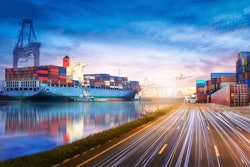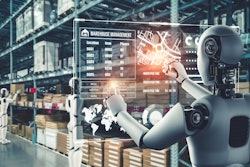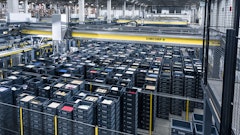
Gartner, Inc. identified the Top 8 supply chain technology themes in 2022, all focused on implementing technological responses to disruptions, supply shortages and security incidents.
“According to a Gartner survey among 211 supply chain professionals in December 2021, 34% of respondents said that adapting to new technology is the most important strategic change supply chain organizations will face five years from now,” says Dwight Klappich, VP analyst with the Gartner Supply Chain practice. “Supply chain leaders must take multi-disciplined approaches for identifying innovative technologies and orchestrate the right technology investments at the right place and the right time.”
From Gartner Inc.:
The top supply chain technology themes in 2022 are:
Hyperautomation 2.0, a business-driven approach that organizations use to rapidly identify, vet and automate as many business and IT processes as possible through the orchestrated use of multiple technologies, such as artificial intelligence (AI) and machine learning (ML).
Next-generation robots are rapidly moving from the science fiction space to real-life production platforms, transforming a wide range of industries. These robots are more flexible and adaptive and now can be applied to a variety of tasks.
Autonomous things, such as robots, vehicles or drones can augment traditional manually intensive physical tasks with greater efficiency, clarity and safety.
Digital supply chain twin is a digital representation of the physical, often multi-enterprise, supply chain. It is the basis for local and end-to-end decision making that ensures all decisions are aligned horizontally and vertically throughout the supply chain.
Analytics are capabilities that deliver reporting, interactive data visualization, advanced analytics and intelligence, including ML and predictive and prescriptive analytics.
Security mesh is a structured framework of governance, collaboration and applied technology applications orchestrated from within supply chains with the aim of ensuring supply chain systems, tools, applications and people are safe and secure at all times.
Ecosystem collaboration tools are digital technologies and services that create a collaborative work environment for people and generates new and continuous shared value opportunities.
Sustainability tools are an evolving spectrum of applications, services and capabilities that support events associated with directives for sustainability, environmental and circular economy impacts and mandates.
“Sustainability has impacts that span the entire value chain — from plan, to source, to make, to deliver, to the service domain. Supply chain leaders who don’t invest in tools that support a wide range of sustainability goals and metrics risk a significant impact on brand, company image and consumer value perception. There’s also a risk of stranded assets, vulnerability to carbon tax, unpreparedness for climate-related supply chain disruptions and accordingly shareholder value,” Klappich adds.




















